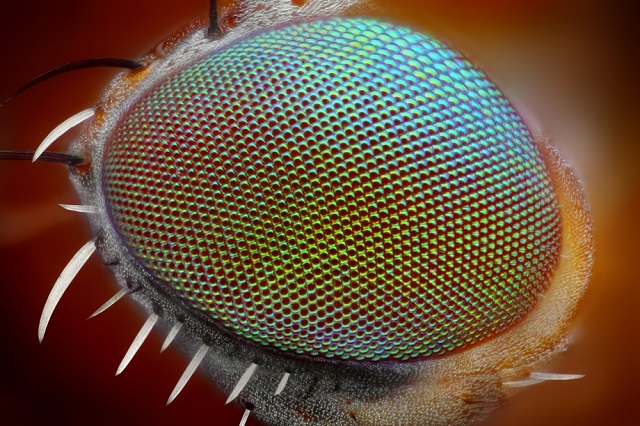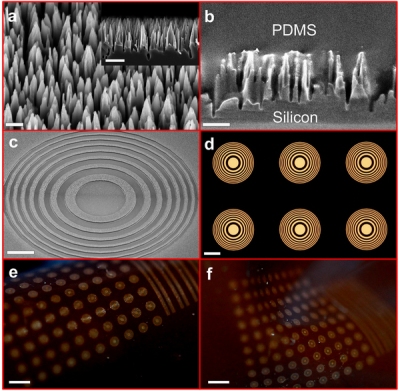Nov 4 2015
Microlenses capable of capturing high-quality macroscale panoramic images have been developed. The microlenses consist of many individual components which work as Fresnel zone plates, mimicking the multifaceted eyes of insects. This is the first time this technology has been successfully used to give high-definition, wide-angle images.

Tomatito | Shutterstock
The newly developed microlenses enable any type of device, from a security camera to a surgical scope, to capture a wide view at only a fraction of the size required by traditional lenses.
Embedded in a flexible plastic material the lenses are as small as the head of a pin. By rolling an array of these lenses into a cylinder, a panoramic image that covers an 170° field of view can be captured.
The team, from the University of Wisconsin-Madison, was led by Hongrui Jiang, who was inspired by the compound eyes of insects.
We know that multiple lenses on a domed structure give a large field of view.
Prof. Hongrui Jiang - University of Wisconsin-Madison
The use of Fresnel zone plates rather than conventional optics in the design of the lenses enabled easy reconfiguration of the shape of the lens array.
To focus light on a single point, conventional lenses use refracted light, where the direction of light is altered when it passes through the different components of the lens, which are typically translucent and stiff. Whereas, the Fresnel zone plates (named after Augustin-Jean Fresnel – a 19th century engineer) focus light using diffraction, where the path of light is bent as it passes by a barrier's edge.
The diameter of the newly developed lens was only a half-millimeter wide and each lens appeared to look like a sequence of ripples created by a stone splashing into water. Each of the concentric rings alternated between bright and dark, similar to a bull’s-eye pattern.
The optical properties of the lens depend on the distance between each ring. This means the optical properties of a single lens can be altered by simply adjusting the distance between each ring via stretching and flexing. Earlier efforts in creating Fresnel zone plate lens' were hampered by fuzzy vision.
The dark areas must be very dark. Essentially, it has to absorb the light completely. It's hard to find a material that doesn't reflect or transmit at all.
Prof. Hongrui Jiang - University of Wisconsin-Madis
In order to overcome this limitation, Jiang’s team trapped light inside the dark areas of the Fresnel zone plate lenses using black silicon. The black silicon consisted of nanowires, i.e. clusters of microscopic vertical pillars of silicon. Once light reaches these microscopic forests it is trapped within their tangled structure, continually to bouncing between the individual silicon nanowires, making the material extremely dark.
 Tiny silicon nano-wire towers make up dark regions of the flexible Fresnel zone lenses. Each individual lens resembles a bull’s-eye of alternating light and dark. Arrays of lenses formed within a flexible polymer bend and stretch into different configurations. Photo: Hongrui Jiang
Tiny silicon nano-wire towers make up dark regions of the flexible Fresnel zone lenses. Each individual lens resembles a bull’s-eye of alternating light and dark. Arrays of lenses formed within a flexible polymer bend and stretch into different configurations. Photo: Hongrui Jiang
Jiang and his team adopted a new bottom-up approach for developing their lenses rather than stacking layers of black silicon layers atop a clear backdrop.
The first step was patterning the aluminum rings atop solid silicon wafers, followed by etching the silicon nanowires in the gaps between aluminum rings. Then, a polymer was introduced inbetween the silicon nanowires pillars. Finally, the silicon backing was etched away after solidification of the plastic support. This approach imparted precise focusing capabilities to the lenses and enabled them to capture a wide field of view.
The research findings have been reported in the journal, Scientific Reports.